Plantar Fasciitis in Athletes: Challenges and Solutions
What is Plantar Fasciitis?
Plantar fasciitis is a common condition involving inflammation of the plantar fascia, a thick band of tissue running across the bottom of your foot, connecting your heel bone to your toes. This condition causes pain in the heel and along the arch of the foot, making it difficult to walk or stand for long periods.

Table of Contents
Structure of the Plantar Fascia
The plantar fascia is primarily composed of dense regular connective tissue, which consists of the following components:
- Collagen Fibers: The main structural components of the plantar fascia, providing strength and rigidity. Type I collagen is the predominant type found in the plantar fascia.
- Elastin Fibers: These fibers provide some degree of elasticity, allowing the plantar fascia to stretch slightly and return to its original shape.
- Ground Substance: A gel-like material surrounding the collagen and elastin fibers, consisting of proteoglycans and glycosaminoglycans, which help resist compressive forces.
- Fibroblasts: Cells responsible for the production and maintenance of collagen and elastin fibers, as well as the ground substance.
- Water: The extracellular matrix of the plantar fascia contains a significant amount of water, helping maintain its flexibility and ability to absorb shock.
Overall, the dense regular connective tissue structure of the plantar fascia provides essential support to the arch of the foot while also withstanding the mechanical stresses of walking, running, and standing.
Causes of Plantar Fasciitis
The primary cause of plantar fasciitis is excessive strain on the plantar fascia. This can result from various factors, including:
- Overuse: Activities that put a lot of stress on your heel and attached tissue, such as long-distance running, ballet, and dance aerobics.
- Foot Mechanics: Having flat feet, a high arch, or an abnormal walking pattern can affect how weight is distributed when you’re standing and can put added stress on the plantar fascia.
- Age: Plantar fasciitis is most common between the ages of 40 and 60.
- Obesity: Excess weight puts extra stress on the plantar fascia.
- Occupational Hazards: Jobs that keep you on your feet for long periods, such as factory workers, teachers, and others who are on their feet a lot.
Symptoms of Plantar Fasciitis
The main symptom of plantar fasciitis is pain at the bottom of the heel, although some patients experience pain at the bottom mid-foot area. It usually affects just one foot, but it can affect both feet. Symptoms include:
- Pain: The pain is often sharp and usually occurs with the first steps in the morning. It can also be triggered by long periods of standing or rising from sitting.
- Stiffness: Stiffness and pain after prolonged inactivity or after sitting down for a while.
- Swelling: Swelling or inflammation at the bottom of the heel.
Impact on Athletes
Athletes are especially susceptible to plantar fasciitis due to the high demands placed on their feet during activities such as running, jumping, and rapid directional changes. The condition can significantly impair performance, making every step painful and limiting the ability to train and compete.
Why Older Athletes Struggle More
Decreased Healing Capacity
As athletes age, their bodies undergo various physiological changes that can hinder the healing process. The natural production of peptides and growth hormones declines with age, leading to slower tissue repair and regeneration. This reduction in biological healing factors makes it more difficult for older athletes to recover from injuries like plantar fasciitis.
Accumulated Wear and Tear
Years of high-impact activities take a toll on the musculoskeletal system, causing cumulative damage that exacerbates the effects of plantar fasciitis. Older athletes often have additional conditions such as arthritis or reduced flexibility, further complicating recovery.
Reduced Blood Flow
Aging also affects blood circulation, which can impair the delivery of essential nutrients and oxygen to the injured area. Poor blood flow slows the healing process and can increase the risk of chronic inflammation and persistent pain.
Peptides for Rapid and Full Recovery
Peptides, which are short chains of amino acids, have shown significant promise in enhancing the body’s natural healing processes. They help to accelerate tissue repair, reduce inflammation, and improve overall recovery outcomes. Several peptides are particularly effective in treating plantar fasciitis by promoting tissue repair and reducing inflammation.
BPC-157
BPC-157 is known for its ability to heal tendons, ligaments, and muscles by promoting the formation of new blood vessels. It reduces inflammation and protects the plantar fascia from further damage. This peptide is highly beneficial for athletes, as it enhances the body’s natural repair mechanisms and speeds up recovery.
TB-500 (Thymosin Beta-4)
TB-500 has potent anti-inflammatory effects and aids in cell migration, which is crucial for tissue repair. It helps to form new blood vessels and improve blood flow to the injured area, enhancing the healing process. This peptide is particularly effective for older athletes who may have compromised blood circulation.
GHK-Cu (Copper Peptide)
GHK-Cu is renowned for its regenerative properties. It helps remodel tissues, reduce inflammation, and stimulate collagen production, which is essential for tendon strength and flexibility. This peptide can significantly improve the structural integrity of the plantar fascia, facilitating faster recovery.
Ipamorelin
Ipamorelin stimulates the release of growth hormone, which accelerates tissue repair and muscle growth. Increased growth hormone levels help speed up the healing of the plantar fascia, making this peptide beneficial for athletes dealing with chronic injuries.
CJC-1295
CJC-1295 is a growth hormone-releasing hormone (GHRH) analog that increases growth hormone and IGF-1 levels. This promotes tissue repair and regeneration, enhancing the healing of the plantar fascia. This peptide is effective in addressing the slowed healing process often seen in older athletes.
Tesamorelin
Similar to CJC-1295, Tesamorelin stimulates the release of growth hormone, helping to improve muscle and tendon repair. It is beneficial for athletes recovering from plantar fasciitis by enhancing the overall healing environment.
Combining Peptides for Maximum Effect
Using peptides in combination can maximize recovery from plantar fasciitis. For instance, combining BPC-157 and TB-500 can significantly enhance tissue repair and reduce inflammation, as both promote blood vessel formation and cell migration. Adding GHK-Cu can further boost collagen production and tissue remodeling. Combining growth hormone-releasing peptides like Ipamorelin, CJC-1295, and Tesamorelin can amplify growth hormone levels, accelerating muscle and tendon repair. By strategically using these peptides, either individually or together, athletes can achieve faster and more comprehensive healing, allowing for a quicker return to their sport.
Conclusion

Plantar fasciitis can be a significant hindrance for athletes, especially older ones, due to the natural decline in the body’s healing capabilities. However, peptides offer a promising solution to enhance tissue repair, reduce inflammation, and accelerate recovery. By leveraging the benefits of peptides like BPC-157, TB-500, GHK-Cu, Ipamorelin, CJC-1295, and Tesamorelin, athletes can achieve rapid and full recovery from plantar fasciitis, enabling them to return to their sport with improved performance and reduced risk of re-injury.
Featured Research Peptides
-
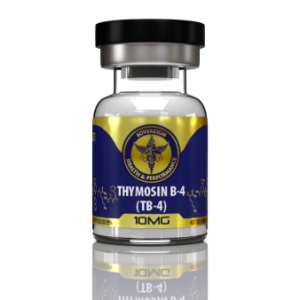 Thymosin B-4 (TB-4)$98.00
Thymosin B-4 (TB-4)$98.00 -
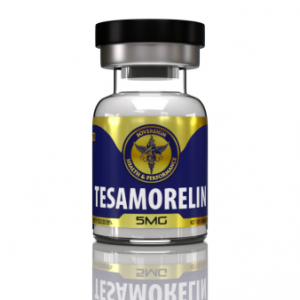 Tesamorelin$69.00
Tesamorelin$69.00 -
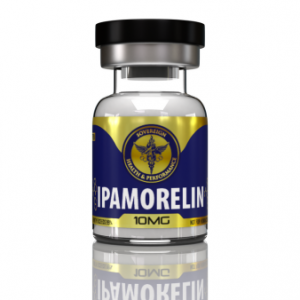 Ipamorelin$77.00
Ipamorelin$77.00 -
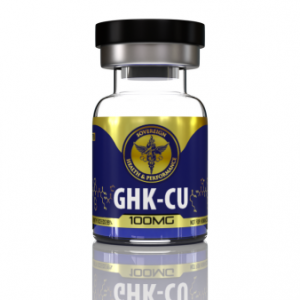 GHK-Cu$69.00
GHK-Cu$69.00 -
 CJC-1295 NO DAC$99.00
CJC-1295 NO DAC$99.00 -
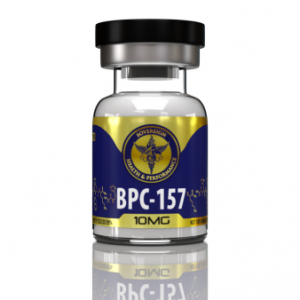 BPC-157$88.00
BPC-157$88.00
References
- Irving, D. B., Cook, J. L., & Menz, H. B. (2006). “Factors associated with chronic plantar heel pain: a systematic review.” Journal of Science and Medicine in Sport, 9(1-2), 11-22. DOI: 10.1016/j.jsams.2006.02.004
- Riddle, D. L., Pulisic, M., Pidcoe, P., & Johnson, R. E. (2003). “Risk factors for plantar fasciitis: a matched case-control study.” The Journal of Bone and Joint Surgery. American Volume, 85(5), 872-877. DOI: 10.2106/00004623-200305000-00015
- Sikiric, P., Seiwerth, S., Rucman, R., et al. (2003). “Stable gastric pentadecapeptide BPC 157: an overview of the possible therapeutic effect in the control of gastrointestinal tract lesions and in liver and kidney failure.” Journal of Physiology Paris, 97(4-6), 321-328. DOI: 10.1016/j.jphysparis.2004.03.001
- Sosne, G., Qiu, P., & Kurpakus-Wheater, M. (2007). “Thymosin beta 4: a novel corneal wound healing and anti-inflammatory agent.” Clinical Ophthalmology, 1(3), 201-207.
- Pickart, L., & Thaler, M. M. (1973). “Growth-modulating plasma tripeptide may function by facilitating copper uptake into cells.” Nature, 243(5404), 85-87. DOI: 10.1038/243085a0
- Raun, K., Hansen, B. S., Johansen, N. L., Thøgersen, H., Madsen, K., Ankersen, M., & Andersen, P. H. (1998). “Ipamorelin, the first selective growth hormone secretagogue.” European Journal of Endocrinology, 139(5), 552-561. DOI: 10.1530/eje.0.1390552
- Teichman, S. L., Neale, A., Lawrence, B., et al. (2006). “Prolonged stimulation of growth hormone (GH) and insulin-like growth factor I secretion by CJC-1295, a long-acting GH-releasing hormone analog.” The Journal of Clinical Endocrinology & Metabolism, 91(2), 799-805. DOI: 10.1210/jc.2005-1536
- Falutz, J., Allard, E., Mamputu, J. C., et al. (2008). “Effects of tesamorelin, a growth hormone–releasing factor, in HIV-infected patients with abdominal fat accumulation: a randomized placebo-controlled trial with a safety extension.” Journal of Clinical Endocrinology & Metabolism, 93(11), 4261-4268. DOI: 10.1210/jc.2008-0727

